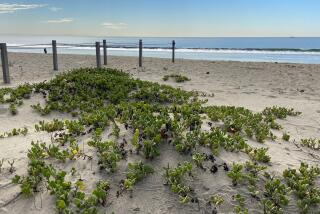Big Coastal Cities Are Their Own Rainmakers, NASA Says
Who says you can’t do anything about the weather?
Large coastal cities have a major effect on area rainfall, according to a NASA study. The cities release warm air that interacts with sea breezes to create heavier and more frequent rainfall in the cities and downwind from them.
Urban areas with high concentrations of buildings, roads and other artificial surfaces retain heat, which leads to higher surrounding temperatures and creates heat islands. Rising warm air produces clouds that increase rainfall.
In coastal cities such as Houston, sea breezes exacerbate the effect, the team reported in the journal Earth Interactions.
An estimated 60% of the Earth’s population is predicted to live in cities by 2025.
J. Marshall Shepherd of NASA’s Goddard Space Flight Center in Maryland and Steve Burian of the University of Arkansas studied precipitation records for Houston before and after urbanization. They concluded that urbanization alone led to a 29% increase in rainfall in the city, compared with areas upwind, and to a 44% increase in areas downwind.
Urbanization also affects the timing of rainfall. In a companion paper, researchers found that, compared with upwind areas, there was twice as much rainfall in Houston in the warmer period between noon and midnight.






